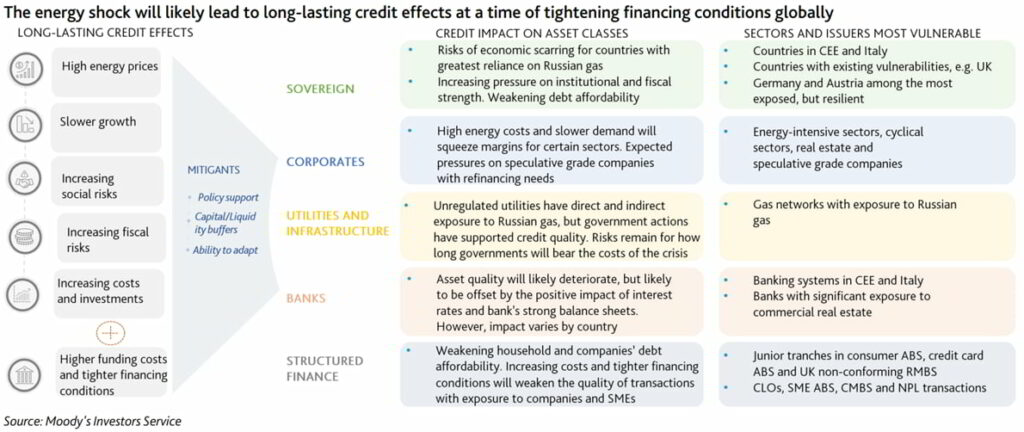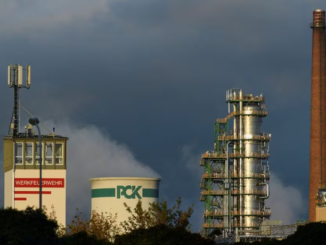
In a bid to tackle Europe’s energy woes, which resulted from the Ukraine crisis, planned investments in gas infrastructure amounting to a whopping $245 billion are in the pipeline across Africa. However, based on Global Energy Monitor’s report, these are in danger of turning into stranded assets, as they are designed as a short-term solution to Europe’s energy crisis.
This report outlines that planned investments across Africa, totalling $245 billion, for liquified natural gas (LNG) terminals, gas pipelines and power stations represent “an enormous stranded asset risk,” as much of this gas is intended to cushion and solve Europe’s short-term energy crisis, resulting from Russia’s invasion of Ukraine, rather than being used for domestic consumption.
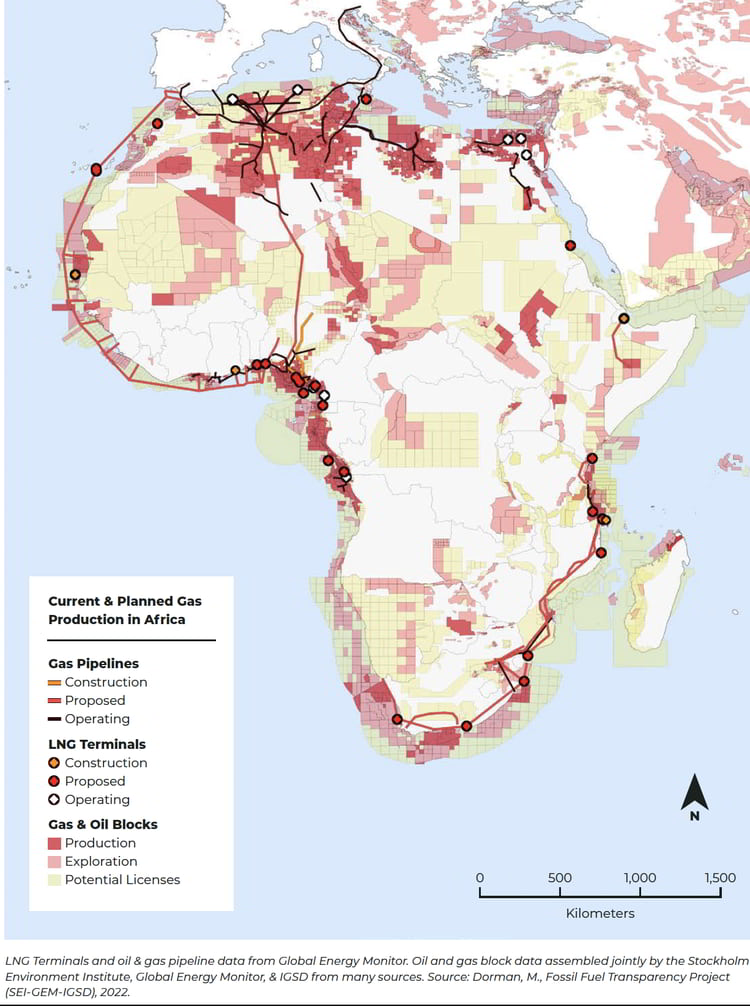
“Planned investment in gas pipeline and LNG export infrastructure competes with domestic demand for gas and much needed renewable energy investment for Africa to realise universal access to clean, affordable, and reliable energy,” as highlighted in the Global Energy Monitor report.
Furthermore, the Africa Gas Tracker’s data shows investments in planned LNG export terminals dwarf money for gas plants to power Africa with estimated capital expenditure for in-development LNG terminals being $103 billion, 92 per cent of which would be for LNG export terminals. This is expected to increase the region’s 79.3 million tonnes per annum (mtpa) of LNG export capacity by 111 per cent while doing little to improve electrification on the continent, says the report.
While the planned gas plant buildout in Africa would require $62 billion in investment, only $9.7 billion is attributed to projects under construction, while $52.3 billion is attributed to proposed projects. In addition, out of 64.1 GW of gas power plant capacity in development, only 10.5 GW is under construction, 17.3 GW is in pre-construction and 36.4 GW has been announced.
While Nigeria and South Africa have 22.5 GW and 16.6 GW of in-development gas plants, respectively, and both are gas-producing countries, each faces inadequate installed electricity generation capacity, underlined the report. As much of the continent’s gas pipeline buildout has not yet secured investment, the planned gas pipeline buildup in Africa would require $89 billion in investment. However, only $4 billion is attributed to projects under construction, while $85 billion is attributed to proposed projects.
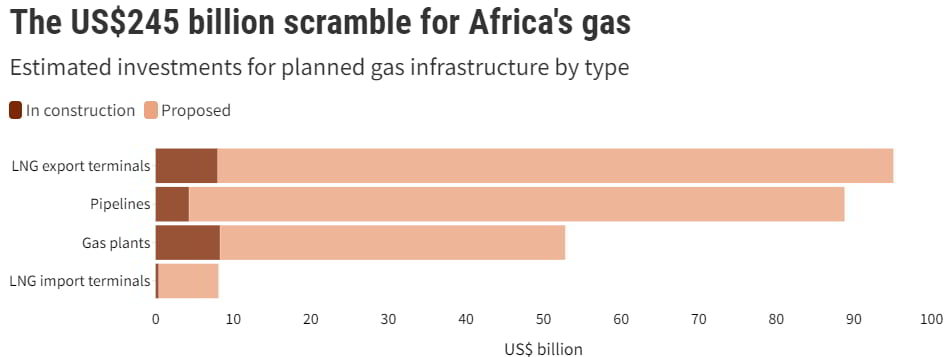
Even though Africa has an estimated 23,932 km of gas pipelines in development, most projects remain in the proposal stage, with only 1,872 km currently under construction. In line with this, South Africa and Mozambique lead in proposed gas pipelines, with 4,792 km and 4,352 km, respectively.
Christine Juta, Project Manager for the Africa Gas Tracker, remarked: “Investments in gas pipelines and LNG export projects compete with Africa’s need to achieve universal access to clean energy and meet domestic demand for gas. Without long-term financing and off-take agreements, African countries risk banking on what could well be a short-lived appetite for gas.”
According to the Africa Gas Tracker, 65 GW of gas plants, 75 mtpa LNG terminal capacity and 22,600 km of gas pipelines are identified to be in development. The report concludes that Europe’s reduced reliance on Russian gas has led to a renewed interest in African gas.
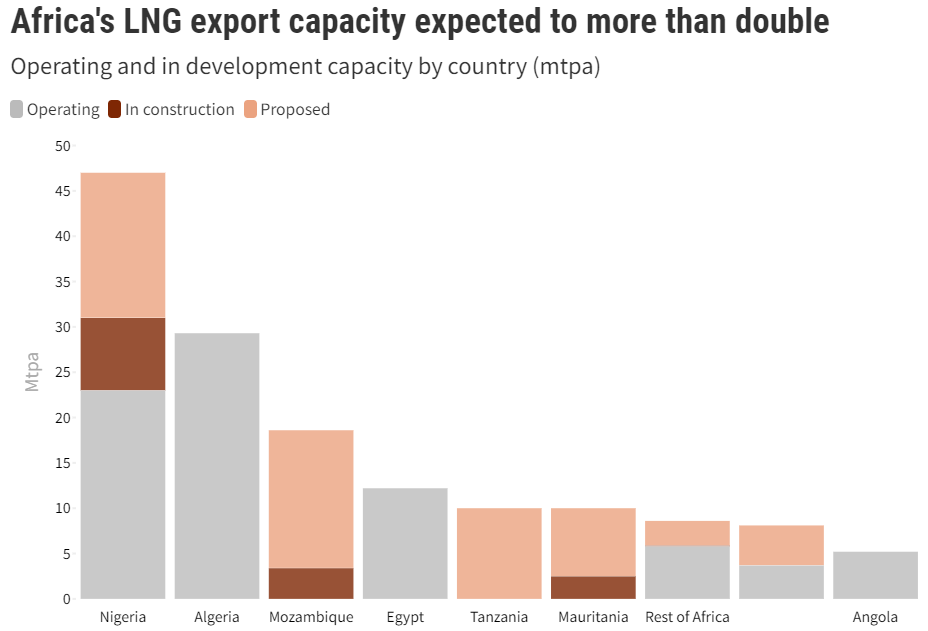
“However, planned projects still face financing challenges, with many of them yet to begin construction. Without long-term financing and off-take agreements, these assets are likely to become stranded in the very near future once the European energy crisis abates,” as underscored by the findings within the report.
This report comes after campaigners called for an end to gas expansion in Africa during COP27. These calls used a report, analysing Rystad Energy data, which was published by environmental research group Urgewald, in partnership with multiple organisations across Africa and Europe, to call out those who have pushed the total capital expenditures (capex) for oil and gas exploration in Africa from $3.4 billion in 2020 to $5.1 billion in 2022.
In line with this, Don’t Gas Africa launched a study to debunk key arguments used by the fossil fuel industry to justify “the dash for gas” in Africa by concluding it was “nothing more than a shortsighted strategy to profit from the energy crisis.”
Meanwhile, Moody’s recently pointed out that unlike the abrupt suspension of large swathes of economic activity in 2020 due to the COVID-19 pandemic, the global energy price shock, galvanised into action by Russia’s war in Ukraine, has unfolded over several months, allowing governments and energy-intensive companies to prepare.
The credit rating agency further noted that policy support is more scarce now and its adverse economic, fiscal and social spillovers will likely persist, probably beyond next year, until the geopolitical causes of the energy shock are resolved.
